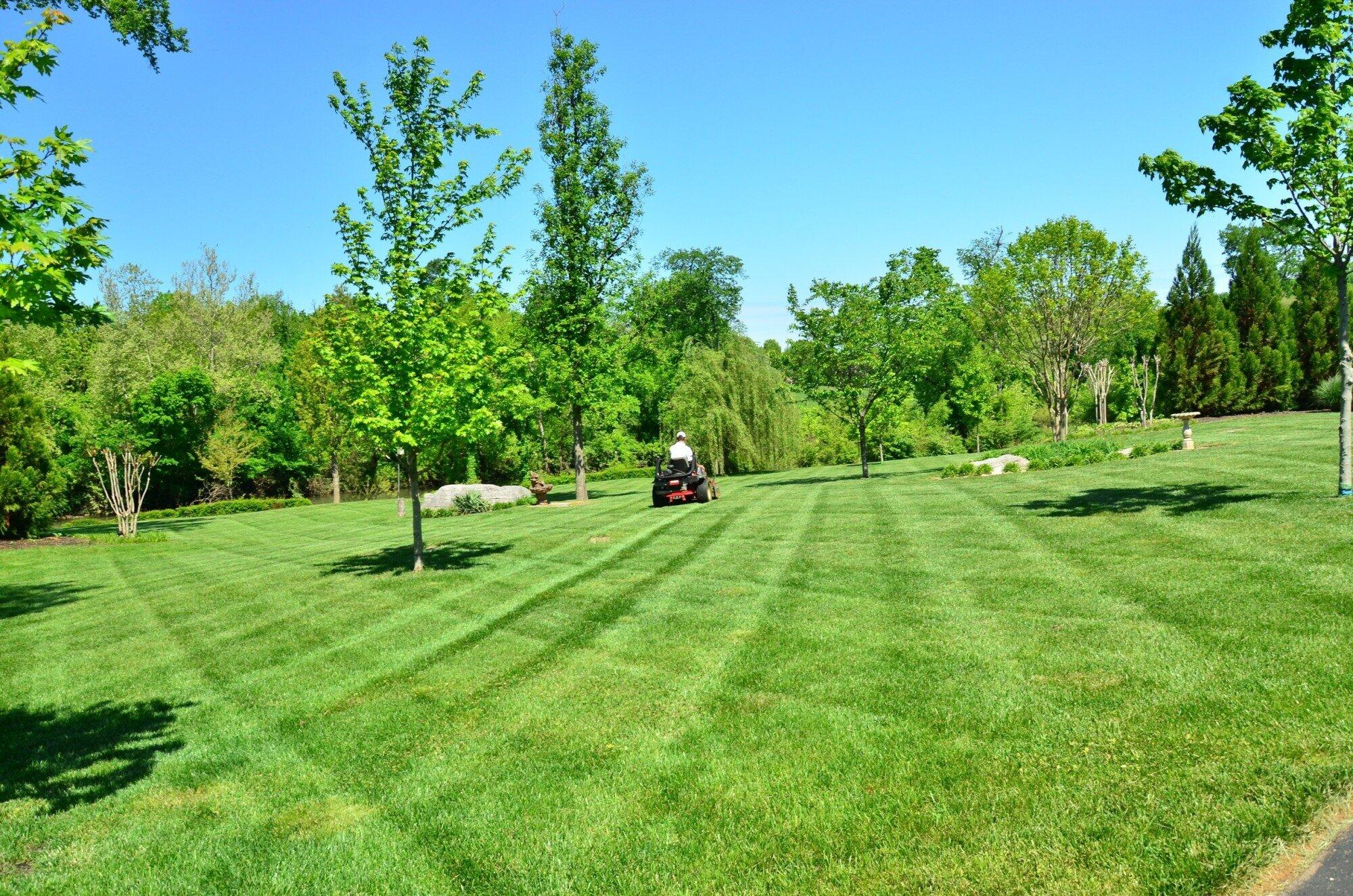How to Measure Lawn Square Footage for a Better Home Listing
You’re looking to sell your home, but you aren’t sure about the size of the lawn. You know the importance of getting all the details right when you list a home. So… what do you do?
Today we’re going over the nuances of how to measure lawn square footage, offering clear, step-by-step advice to accurately showcase the size of your lot.
Dive in to ensure your property doesn’t just get noticed–it gets remembered!
Understanding the Value of Lot Size in Home Listings
When selling your home, every detail counts, especially the size of your lawn. Accurate information about your lot can make a big difference to someone looking to buy a new home.
It helps buyers understand what they’re getting before they even see the property. This can be a game-changer in markets with lots of homes for sale, like Memphis.
Measuring your yard and sharing its size in your home listing can set your property apart. Buyers often have specific needs, such as a large backyard for their kids or a garden.
When you provide the size of your lawn, potential buyers can easily see if your home meets their needs. This can lead to more interest in your property.
Listing the size of your lawn can also help with the valuation of your property. A larger outdoor space can often increase the value of your home. Buyers might be willing to pay more for a property that offers a spacious backyard.
Identifying Your Lot Lines
Before you start measuring your lawn, it’s key to know where your property begins and ends. This is what we call finding your lot lines.
Your property documents are a good place to start. These include your deed and house plans. They often show the boundaries of your land.
If you’re unsure where these documents are, your local records office in Memphis, Tennessee, should have a copy.
Sometimes your property might have physical markers. These could be metal stakes in the ground at the corners of your lot.
If you can’t find them, a metal detector can help. That’s because it’s not just about what you can see. Your actual property lines might be different from where you think they are.
This is why it’s important to check.
Memphis has rules about where you can build or plant on your property. Knowing your exact property lines helps you follow these rules.
It also stops any disputes with neighbors about where your property ends and theirs begins. If there’s ever a question or problem with your property lines, it might be a good idea to talk to a professional surveyor. They can measure and confirm where your property boundaries are.
Sometimes, neighbors might disagree about where the property lines are located. If this happens, check your property documents first. If you still can’t agree, a professional surveyor’s word is usually respected.
They use special tools and follow strict rules to figure out property lines.
Taking the time to identify your lot lines accurately is a big step in making sure your lawn measurement is right.
How To Measure Lawn Square Footage
Getting an accurate measurement of your lawn starts with having the right tools. For most lawns, a simple measuring tape is enough.
For larger areas, a wheel measure can speed things up. There’s also technology on your side. Many apps can help you map and measure your yard with just your smartphone.
Choosing Your Tools
Measuring tape works well for small to medium-sized yards. It’s affordable and easy to use. For bigger lawns, a measuring wheel lets you walk the length of your property and records the distance automatically.
It’s perfect for covering more ground without getting tangled in a long tape measure. Smartphone apps use satellite images and GPS to estimate your lawn size.
They are handy for a quick estimate but might not be as accurate as manual measurements.
Measuring Different Lawn Shapes
Not all lawns are simple rectangles. Some are circles, triangles, or have many sides.
For a rectangular or square lawn, measure the length and width and multiply them. This gives you the area in square feet.
For a circular lawn, measure the distance across the center (diameter). Then divide it by two to find the radius, and then multiply that number by itself and by 3.14 (π).
Handling Obstacles and Irregular Shapes
Most lawns have obstacles like trees or flower beds. When you measure, pretend these aren’t there. Measure the full length and width of the space as if it was empty.
Lay the string along the edge, then straighten it out to measure the length with a tape measure. This can be time-consuming but is often necessary for accurate measurements.
Calculating the Square Footage of Irregular Shaped Lawns
Many lawns have more complex shapes. If this is the case for your yard, you can break it down into smaller sections that are easier to measure, like rectangles or triangles.
Measure each section separately, then add those areas together to get the total square footage of your lawn.
For triangles, measure the base and the height, multiply those numbers, and then divide by 2 to find the area of each triangular section.
Accuracy is important in this step. Make sure to measure carefully and double-check your calculations.
An accurate square footage not only helps with your home listing but also when planning landscaping projects or installing a new garden. It ensures you buy the right amount of materials and helps contractors give accurate quotes for their work.
If math isn’t your strong suit, don’t worry. There are plenty of online calculators that can help. Just plug in your measurements, and they’ll do the calculations for you.
The goal is to get as accurate a measurement as possible. Taking your time and checking your work can make a big difference in the long run, whether you’re listing your home for sale or planning your next backyard project.
Incorporating Lawn Size into Your House Listing
When you’re ready to sell your home, every detail counts. This is especially true in a place like Memphis, where the backyard can be a big selling point.
After you’ve measured your lawn accurately, it’s time to use that information to make your house listing shine. Adding the exact size of your lawn can attract more buyers.
People looking for homes often have a clear idea of the yard size they want. By providing this information upfront, you make it easier for them to see if your home fits their needs.
When you write your listing, be clear and straightforward about the lawn size. Use the square footage to highlight the potential of your backyard.
You can talk about the space being perfect for garden lovers, families looking for a safe play area for kids, or anyone dreaming of outdoor gatherings. This not only shows the value of your home but also helps buyers picture their lives there.
Selling a home is not just about the numbers. It’s also about connecting with the buyer’s emotions and dreams.
A spacious, well-maintained lawn can be a key feature that sets your home apart.
So, don’t just mention the size. Describe what makes your lawn special.
Is it the lush grass, the mature trees, or the beautiful landscaping? These details can turn a simple listing into an inviting picture of a future home.
Common Mistakes to Avoid When Measuring Yard Size
Measuring your yard might seem straightforward, but small mistakes can lead to big problems. This is especially true when you’re listing your home for sale.
One common error is not checking for accuracy. It’s easy to assume that one measurement is enough. But taking the time to measure twice can save you from listing the wrong size.
This is important because potential buyers might plan based on the information you provide. If they find out the actual size is different, it could turn them away.
Another mistake is ignoring the shape of your lawn. Some yards are not perfect rectangles or squares. If you treat an irregularly shaped yard as a simple shape, you might end up with an inaccurate measurement.
Make sure to account for every corner and curve. This might mean breaking your yard into smaller sections and measuring each one.
Forgetting to consider slopes and hills is also a mistake. If your yard isn’t flat, the land’s contour can affect the total area. While measuring the surface length and width is a good start, you might need to adjust your calculations for slopes.
This ensures that the size you list reflects the usable space.
Lastly, not using the right tools can lead to errors. While a smartphone app might be convenient, it’s not always the most accurate method.
For the best results, use a physical measuring tape or a wheel measure. These tools can provide a more precise measurement of your lawn’s size.
Get Your Measurements Right the First Time
Measuring your lawn is a key step in creating an attractive home listing. With these tips, you know how to how to measure lawn square footage correctly.
When your only goal is to sell, finding a home buyer who can offer you cash for homes is ideal. As the top cash buyers in Memphis, We Buy Houses is ready to make you an offer.
Get in touch today to find out more!


